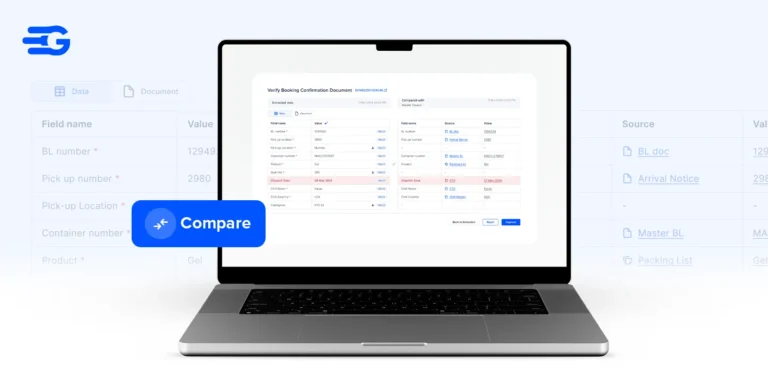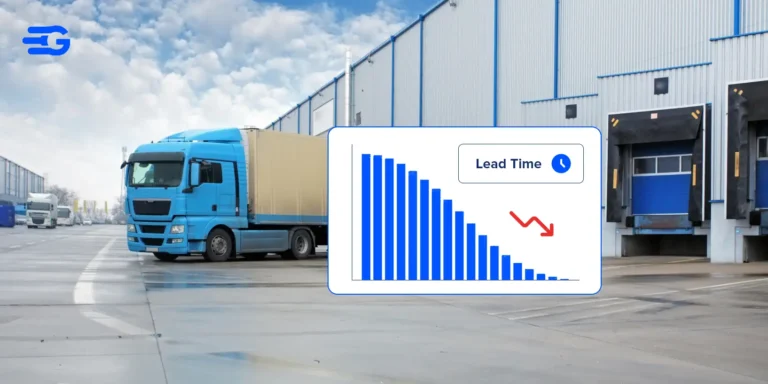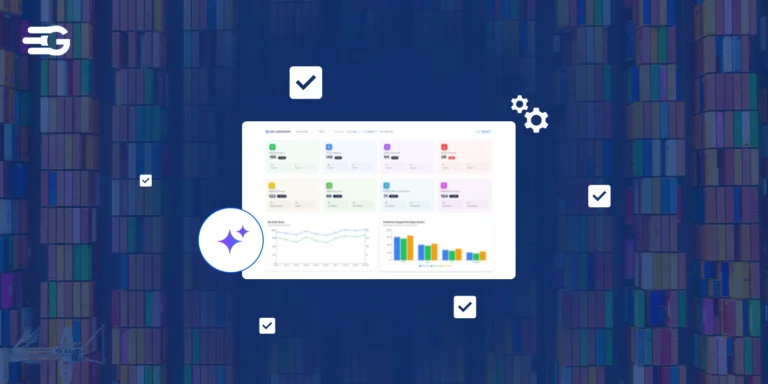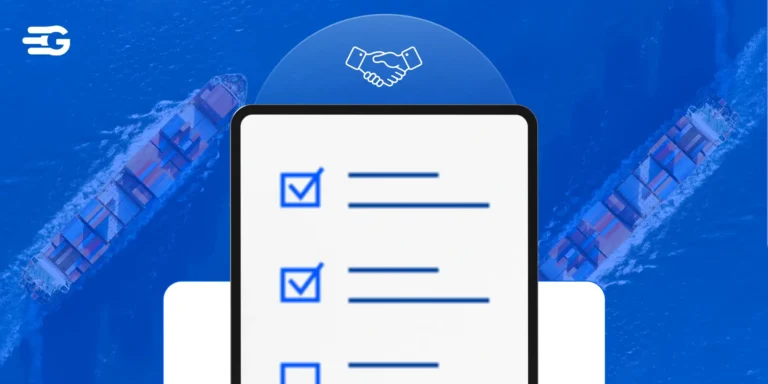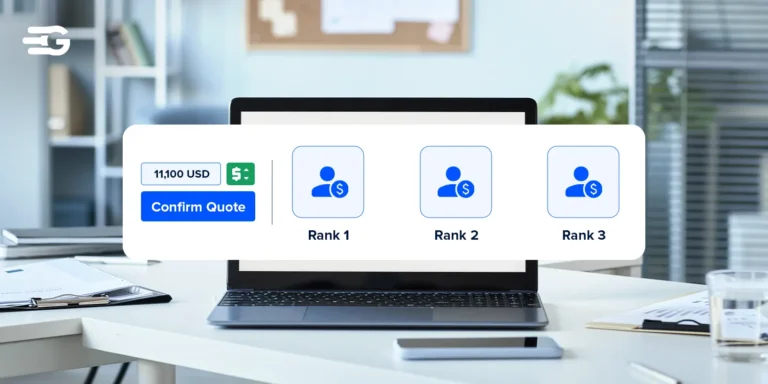Commercial Invoice vs Pro forma Invoice: What’s the Difference
Most people in logistics know about commercial invoices and proforma invoices, but there’s still confusion about when to use what. Your sales team loves proformas because they help close deals and give customers something to show their finance department. But once goods are ready to ship, you need commercial invoices because that’s what customs expects and what triggers your payment terms.
It’s not rocket science, but getting it wrong creates headaches nobody wants. So, let’s break down all core differences between commercial invoice vs pro forma invoice so you can avoid the common mistakes that slow down operations.
What is a Commercial Invoice?
A commercial invoice is the official document that goes with shipped goods and demands payment from the buyer. It’s legally binding, which means once you send it, the buyer officially owes you money.
- Customs officials use commercial invoices to determine duties and taxes.
- Your accounting team uses them to track revenue.
- Banks use them for letters of credit, commercial loan processing, and payment collection.
Basically, everyone in the supply chain needs this document to do their job properly.
These invoices are only created after goods are ready to ship or already shipped. Send one too early and you might have compliance issues. Send one with wrong information and your shipment gets held up while everyone sorts out the mess.
Typical Elements of Commercial Invoices
- Buyer and seller details with full addresses
- Description of goods with quantities and prices
- Total amount due and payment terms
- Invoice number and date
- Shipping terms and method
- HS codes for customs classification
What is a Pro Forma Invoice?
A pro forma invoice is basically a detailed quote that looks like a real invoice but isn’t one. You send it before any actual sale happens, usually when a customer wants to see exactly what they’re buying and how much it’ll cost. It’s like showing someone the receipt before they decide to make the purchase.
Pro forma invoices help customers get internal approvals, arrange financing, or apply for import licenses. Since there’s no actual transaction yet, pro forma invoices don’t create any payment obligations.
You might send several versions back and forth during negotiations. Once everyone agrees and you’re ready to ship, that’s when the pro forma gets replaced by an actual commercial invoice.
Typical Elements of Pro Forma Invoices
- Estimated pricing for goods or services
- Product descriptions and specifications
- Approximate shipping costs and delivery timeline
- Validity period (usually 30-60 days)
- Terms and conditions of the potential sale
- “Pro Forma” clearly marked on the document
Commercial Invoice vs Pro Forma: Key Differences
Here’s where things get practical – knowing when to use which document can save you from major headaches.
1. Timing and Purpose
Commercial invoices only get created after you’ve shipped goods or are about to ship them. Pro forma invoices come way earlier in the process, usually during the quote phase when customers are still deciding. Think of commercial invoice vs pro forma timing like the difference between “here’s your bill” and “here’s what it would cost.”
2. Customs Requirements
Customs officials only accept commercial invoices for import processing. Try sending a pro forma invoice to clear goods through customs and you’ll get your shipment bounced back fast. The commercial invoice vs pro forma distinction is critical here because customs needs the real transaction details, not preliminary estimates.
3. Legal Weight
A commercial invoice creates a real debt – your customer legally owes you money once they receive it. Pro forma invoices have zero legal standing. They’re estimates that either party can walk away from without consequences.
4. Payment Processing
Your accounting team can only record actual revenue from commercial invoices. Banks won’t process payments against pro forma invoices either. Proforma documents are planning tools that don’t trigger any financial transactions.
5. Information Accuracy
Commercial invoices must have exact details – precise quantities, final prices, actual shipping costs. Pro forma invoices can include estimates and approximations since they’re just giving customers an idea of costs.
6. Document Control
Commercial invoices get sequential numbering for audit trails and tax compliance. Pro forma invoices don’t need the same strict numbering system since they’re not official financial records.
7. Validity Period
Pro forma invoices typically expire after 30-60 days and need updates if prices change. Commercial invoices don’t expire – they remain valid until paid according to your payment terms.
8. Changes and Modifications
You can easily modify pro forma invoices during negotiations. Once a commercial invoice is issued, changes require credit notes, revised invoices, or formal amendments.
Understanding these commercial invoice vs pro forma differences helps you avoid the common mistakes that create operational problems.
With that said, let’s now look at when to use each document in your daily operations.
When to Use Commercial Invoice and Proforma Invoice
Getting the commercial invoice vs pro forma timing right prevents costly mistakes and keeps your operations running smoothly.
| Document Type | When to Use |
| Commercial Invoice | – Goods are ready to ship or already shipped- Customer has confirmed the order and committed to buy- Customs clearance and import documentation- Payment processing and collection- Final invoicing after delivery completion- Letter of credit transactions- Tax and audit record keeping |
| Pro Forma Invoice | – Customer requests detailed pricing information- Buyer needs internal approval or budget planning- Import license applications and permits- Customs pre-clearance or duty calculations- Bank financing or loan applications- Sales negotiations and contract discussions- Sample shipments or trial orders |
How GoComet’s GoInvoice Module Streamlines Invoice Management
Managing the commercial invoice vs pro forma workflow becomes much easier when you have the right technology handling the heavy lifting. GoComet’s GoInvoice module uses OCR technology and contextual language processing to automatically match invoices to original quotations, saving up to 65% of time required in invoice processing.
This matters because whether you’re dealing with commercial invoices or pro forma invoices, the system ensures accuracy without manual intervention.
Some key features are as follows:
- Automated Quote Management: Stores initial quotations as baseline references and tracks validity periods during the pro forma stage
- Smart Invoice Matching: Automatically compares final commercial invoices against contracted rates and original quotations
- Duplicate Detection: Automatically rejects duplicate invoices and notifies vendors of discrepancies
- Workflow Automation: Enables auto-approval based on predefined tolerance levels for faster payment cycles
- Centralized Repository: Maintains all document versions and communications in one place for easy audit trails
- Real-time Notifications: Alerts teams when documents need attention or when discrepancies are found
Companies using GoInvoice report being able to divert 75% of their invoice verification workforce to other tasks because the system handles the document matching automatically.
This means your team can focus on strategic work instead of chasing down invoice errors and mismatched documents.
Conclusion
The commercial invoice vs pro forma mix-up happens because both documents look similar and contain overlapping information. But now that you know the timing and legal differences, you can set up better workflows to prevent these issues. Train your team on which document goes where, and consider automating the process to reduce human error.
Most logistics operations benefit from having clear standard operating procedures that spell out exactly when each document gets created and who handles what. This prevents the back-and-forth confusion that slows down shipments and frustrates customers. Check out GoComet’s demo to see how automation handles the document workflow for you.
